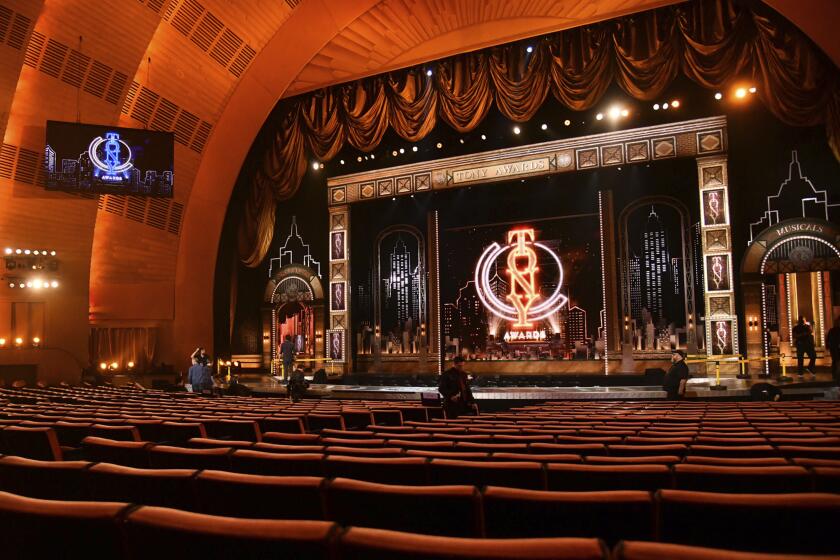The Italian, American Divide
- Share via
Two radically different concepts of ballet make mid-July something of an artistic referendum. On July 11, American Ballet Theatre brings to the Music Center its production of “Le Corsaire,” a much revised 1868 Marius Petipa story ballet that the company performed in Costa Mesa three years ago.
Eight days later, at the Orange County Performing Arts Center, the contemporary Italian company Aterballetto introduces Southern California to “A Midsummer Night’s Dream,” choreographed two years ago by Mauro Bigonzetti to music by Elvis Costello.The Italians obviously have novelty in their favor; the Americans boast an array of international stars. But in the deepest sense, the engagements are a lesson in contrast: one company that uses stars to animate fake choreographic antiques; the other believes in ballet as a living art form.
Yes, ABT offers its New York audiences plenty of major contemporary choreography. On local stages, however, it nearly always retails some of the worst editions of 19th century classics seen anywhere--most recently a stodgy “Nutcracker,” a patchwork “Swan Lake” and now, again, this irredeemably cheesy “Corsaire.”
Petipa, of course, is the fabled architect of Imperial Russian style and Bigonzetti merely a 42-year-old working artist. But he’s not unknown on our stages: He was a featured choreographer on the last Stuttgart Ballet visit two years ago, and Balletto di Toscana danced his full-evening “Mediterranea” in 1998--in both cases at OCPAC.
Whether Bigonzetti can make us forget the masterpieces that George Balanchine and Frederick Ashton developed from “A Midsummer Night’s Dream” can’t be predicted, but the ballet is sure to be inimitably his.
So the key question remains: Should we expect the world’s finest dancers to prop up ever more dubious scavengings from the 19th century or can classicism successfully serve new visions and new audiences?
More to Read
The biggest entertainment stories
Get our big stories about Hollywood, film, television, music, arts, culture and more right in your inbox as soon as they publish.
You may occasionally receive promotional content from the Los Angeles Times.










